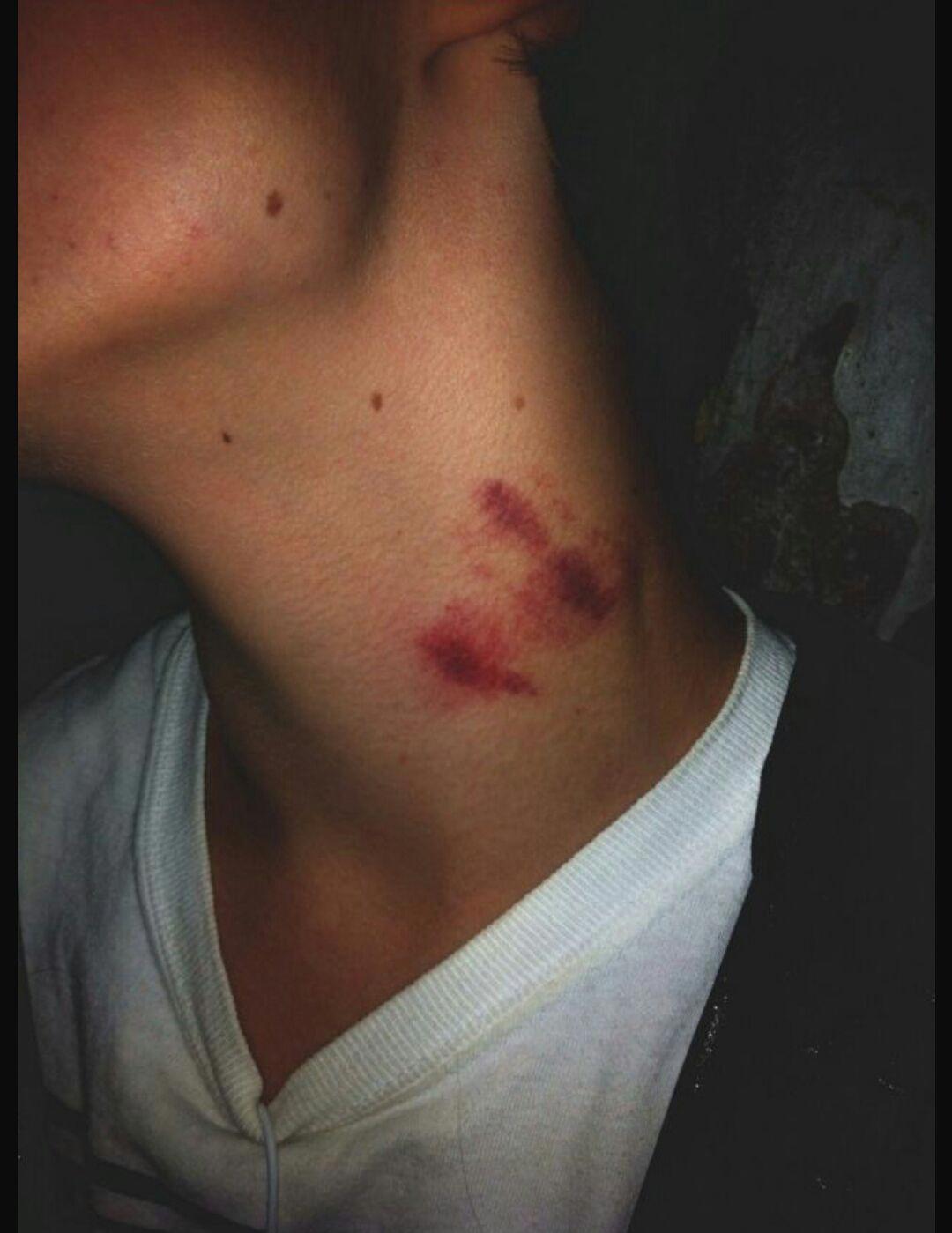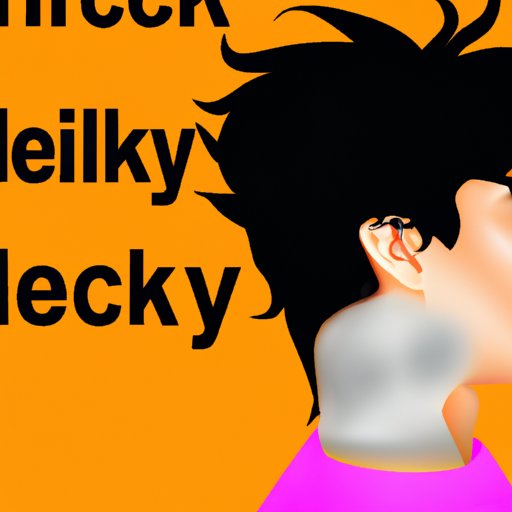Why Are Hickeys Bad? The Truth Behind Those Love Bites
Ever wondered why people make such a fuss about hickeys? You know, those little red or purple marks that pop up after a passionate make-out session. They’re like love’s little souvenir, but hey, not everyone’s feeling the vibe. So, why are hickeys bad, really? Is it just societal pressure, or is there something more to it? Let’s dive deep and uncover the truth behind those sneaky love bites.
Look, let’s be real here. Hickeys are kind of a double-edged sword. On one hand, they’re a symbol of affection, passion, and intimacy. On the other hand, they can be embarrassing, painful, and sometimes even leave scars. But before we get into the nitty-gritty, let’s talk about why people care so much about these little marks in the first place. Is it just about appearances, or is there a deeper reason why hickeys have such a bad rep?
Now, this isn’t just about being judgmental. There’s actually some science and social norms behind the whole "hickeys are bad" thing. So, if you’ve ever been curious—or maybe even guilty of leaving one on someone—this article’s for you. We’ll break it all down, from the biology to the sociology, and everything in between.
Read also:Who Has Justin Bieber Dated A Comprehensive Exploration Of His Love Life
What Exactly Are Hickeys?
Before we jump into why hickeys might be considered bad, let’s first understand what they actually are. Hickeys, also known as "love bites," are basically bruises caused by suction or biting on the skin. When someone sucks hard enough on your neck, they rupture tiny blood vessels beneath the skin, leaving behind that signature red or purple mark. Sounds romantic, right?
But here’s the thing: hickeys aren’t just random marks. They’re a sign of physical intimacy, and for some people, that’s where the problem starts. Society tends to attach certain meanings to hickeys, and not all of them are positive. So, let’s explore why these marks often carry a negative connotation.
Why Are Hickeys Bad? The Social Stigma
Social norms play a huge role in how we perceive hickeys. In many cultures, public displays of affection are frowned upon, and hickeys are seen as a blatant violation of those norms. Think about it: a hickey is essentially a visible reminder of something private, and that can make people uncomfortable. It’s like wearing your heart on your sleeve—literally.
Plus, there’s the issue of consent. Not everyone wants to wear a hickey, and leaving one without permission can be seen as disrespectful. It’s important to remember that intimacy should always be mutual, and that includes the little things like love bites. So, while hickeys might seem harmless, they can actually carry some serious social baggage.
Health Risks: Are Hickeys Dangerous?
Here’s where things get a little more serious. While hickeys are generally harmless, they can sometimes lead to complications. For starters, excessive suction or biting can cause more than just a bruise. In rare cases, it can lead to nerve damage or even infections if the skin breaks. And let’s not forget about the risk of spreading diseases through open wounds.
Plus, if you’re prone to blood clotting issues or have sensitive skin, hickeys might not be the best idea. They can take weeks to fade, and in some cases, they might leave permanent scars. So, while a hickey might seem like a small price to pay for love, it’s worth considering the potential health risks before diving in headfirst.
Read also:Exploring The Depths Of Mayim Bialiks Literary Journey
How Long Do Hickeys Last?
One of the biggest concerns about hickeys is how long they stick around. On average, a hickey can last anywhere from a few days to a couple of weeks, depending on factors like skin type and the severity of the bruise. And let’s be honest, walking around with a giant red mark on your neck for two weeks isn’t exactly ideal, especially if you’re in a professional setting.
But here’s a pro tip: there are ways to speed up the healing process. Applying a cold compress immediately after the hickey forms can help reduce swelling and discoloration. You can also try using a warm compress a few days later to promote blood flow and speed up healing. Just be patient—it takes time for those little love bites to fade away.
Relationship Dynamics: Is a Hickey a Good Thing?
Now, let’s talk about relationships. For some couples, hickeys are a fun and playful way to express affection. They’re like a secret language that only the two of you understand. But for others, hickeys can be a source of tension. What happens if your partner gets jealous or feels insecure about the mark? Or what if you accidentally leave one on someone else’s neck during a casual hook-up?
The key here is communication. If you’re in a committed relationship, make sure you’re both on the same page about physical intimacy. And if you’re not ready to wear your heart (or your hickey) on your sleeve, it’s okay to set boundaries. Love should never come at the cost of your comfort or consent.
Consent Matters: The Importance of Asking First
We can’t stress this enough: consent is everything. Whether it’s leaving a hickey or engaging in any other form of physical intimacy, always make sure your partner is comfortable and on board. Leaving a hickey without permission is not only disrespectful, but it can also damage trust in a relationship. So, before you go all in, take a moment to check in with your partner and make sure they’re okay with it.
Professional Consequences: Can Hickeys Affect Your Career?
Let’s face it: in a professional setting, hickeys can be a major distraction. Imagine walking into an important meeting with a bright red mark on your neck. Not exactly the best first impression, right? While some workplaces might be more laid-back about personal matters, others might view hickeys as unprofessional or inappropriate. And let’s not forget about the potential gossip that can arise from such a visible mark.
So, if you’re in a career-driven environment, it might be wise to avoid hickeys altogether—or at least keep them hidden until you’re off the clock. After all, your professional reputation is just as important as your personal life.
How to Hide a Hickey: Tips and Tricks
Okay, so you’ve got a hickey, and you’re not ready to show it off to the world just yet. No worries—we’ve got you covered. Here are a few tips and tricks for hiding those pesky love bites:
- Use concealer or foundation to cover up the mark. Look for products that match your skin tone and have a long-lasting formula.
- Try wearing a scarf or high-necked shirt to hide the hickey. It’s a classic move that always works.
- Apply a cold compress to reduce swelling and discoloration. This can help the hickey fade faster.
- Consider using a medicated cream or ointment to speed up the healing process. Just make sure to follow the instructions carefully.
Remember, hiding a hickey is all about being strategic. Whether you choose to cover it up with makeup or hide it under clothing, the key is to stay confident and own your choices.
Alternatives to Hickeys: Expressing Affection Without the Marks
If you’re looking for ways to express affection without leaving a lasting mark, there are plenty of alternatives to consider. Here are a few ideas:
- Focus on gentle kissing or caressing instead of aggressive suction.
- Explore other forms of physical intimacy, like holding hands or cuddling.
- Communicate with your partner about what makes you feel loved and appreciated.
At the end of the day, love is about connection, not just physical marks. So, if you’re not into hickeys, there are plenty of other ways to show your partner how much they mean to you.
Breaking the Stigma: Why Hickeys Don’t Have to Be Bad
While society might have some negative opinions about hickeys, that doesn’t mean they have to be bad. For many people, hickeys are a symbol of love, passion, and intimacy. They’re a reminder of a special moment shared with someone you care about. And hey, if you’re comfortable with wearing your heart on your sleeve, why not embrace it?
Of course, it’s important to be mindful of consent and boundaries. But if both partners are on the same page, there’s no reason why a hickey can’t be a beautiful thing. After all, love comes in all shapes and sizes—and sometimes, it leaves a mark.
Final Thoughts: Why Are Hickeys Bad? It’s Up to You
So, why are hickeys bad? The answer really depends on your perspective. For some people, they’re a harmless reminder of love and affection. For others, they’re a source of embarrassment or even discomfort. At the end of the day, it’s up to you to decide how you feel about hickeys—and whether or not they’re worth the potential risks.
But here’s the bottom line: love should always be respectful, consensual, and mutually enjoyable. Whether you choose to embrace hickeys or avoid them altogether, make sure you’re doing what feels right for you and your partner. And if you ever need a little help hiding those love bites, we’ve got your back.
Thanks for reading, and don’t forget to share your thoughts in the comments below. Do you think hickeys are bad, or are they just misunderstood? Let’s keep the conversation going!
Table of Contents
- What Exactly Are Hickeys?
- Why Are Hickeys Bad? The Social Stigma
- Health Risks: Are Hickeys Dangerous?
- How Long Do Hickeys Last?
- Relationship Dynamics: Is a Hickey a Good Thing?
- Consent Matters: The Importance of Asking First
- Professional Consequences: Can Hickeys Affect Your Career?
- How to Hide a Hickey: Tips and Tricks
- Alternatives to Hickeys: Expressing Affection Without the Marks
- Breaking the Stigma: Why Hickeys Don’t Have to Be Bad


